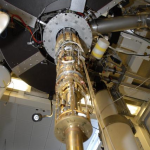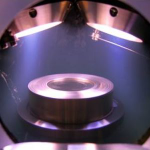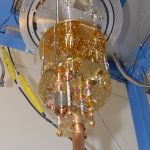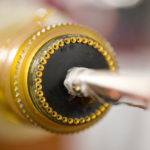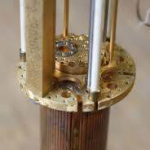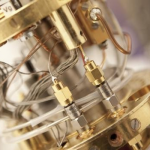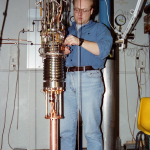

- Photon Transport in a Bose-Hubbard Chain of Superconducting Artificial Atoms
G. P. Fedorov et al., Phys. Rev. Lett. 126, 180503 (2021) - Path-Dependent Supercooling of the
He3 Superfluid A-B Transition
Dmytro Lotnyk et al., Phys. Rev. Lett. 126, 215301 (2021) - Superconductivity in an extreme strange metal
D. H. Nguyen et al., Nat Commun 12, 4341 (2021) - High-Q Silicon Nitride Drum Resonators Strongly Coupled to Gates
Xin Zhou et al., Nano Lett. 21, 5738-5744 (2021) - Measurement of the 229Th isomer energy with a magnetic micro-calorimeter
T. Sikorsky et al., Phys. Rev. Lett. 125 (2020) 142503
Fabrication of microfluidic cavities using Si-to-glass anodic bonding
N. Zhelev, T. S. Abhilash, R. G. Bennett, E. N. Smith, B. Ilic, J. M. Parpia, L. V. Levitin, X. Rojas, A. Casey, J. SaundersWe demonstrate the fabrication of ∼1.08μm deep microfluidic cavities with characteristic size as large as 7mm × 11mm or 11mm diameter, using a silicon-glass anodic bonding technique that does not require posts to act as separators to define cavity height. Since the phase diagram of 3He is significantly altered under confinement, posts might act as pinning centers for phase boundaries. The previous generation of cavities relied on full wafer-bonding which is more prone to failure and requires dicing post-bonding, whereas these cavities are made by bonding a pre-cut piece of Hoya SD-2 glass to a patterned piece of silicon in which the cavity is defined by etching. Anodic bonding was carried out at 425 °C with 200 V, and we observe that pressurizing the cavity to failure (>30 bars pressure) results in glass breaking, rather than the glass-silicon bond separation. In this article, we discuss the detailed fabrication of the cavity, its edges, and details of the junction between the coin silver fill line and the silicon base of the cavity that enables a low internal-friction joint. This feature is important for mass coupling torsional oscillator experimental assays of the superfluid inertial contribution where a high quality factor (Q) improves frequency resolution. The surface preparation that yields well-characterized smooth surfaces to eliminate pinning sites, the use of transparent glass as a cover permitting optical access, low temperature capability, and attachment of pressure-capable ports for fluid access may be features that are important in other applications.
Review of Scientific Instruments 89, 073902 (2018)
doi: 10.1063/1.5031837
arxiv: https://arxiv.org/abs/1805.00958
